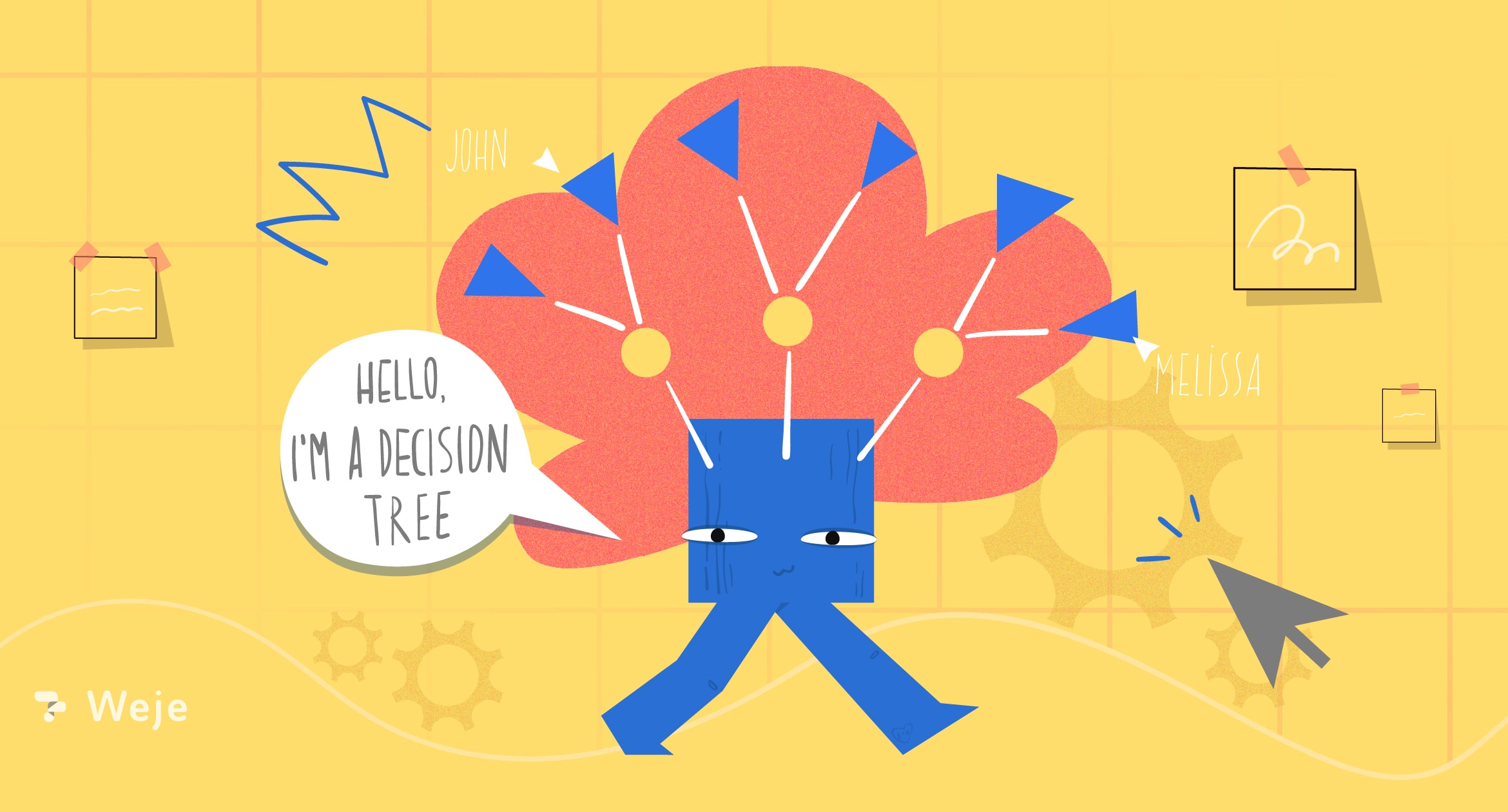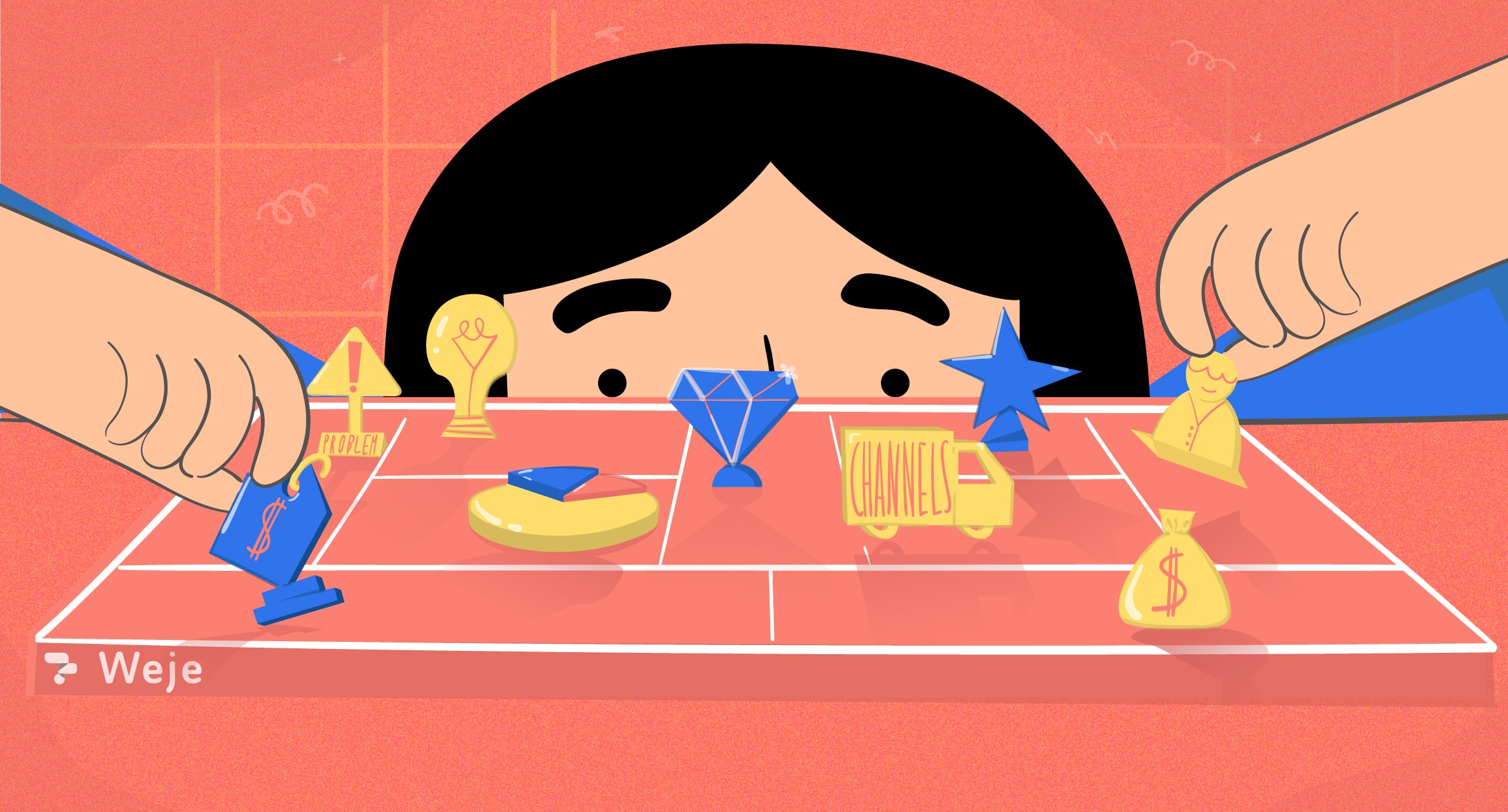Have you ever wondered how to visualize and analyze your decisions in a strategic and methodical way that allows you to determine probable outcomes? A decision tree is a handy diagram that can improve your decision-making process and prevent illogical results.
In this guide, we will discuss what a decision tree is and how it can help you effectively visualize the decision-making process.
What is a Decision Tree?
A decision tree is a powerful flow chart with a tree-like structure used to visualize probable outcomes of a series of related choices, based on their costs, utilities, and possible consequences. It includes branches representing decision-making steps and can be used to map out or predict the best course of action.
Decision Tree elements
Decision trees usually consist of three different elements: the root or start node, the branches, and the leaf node.
- The Root Node
The root or start node is the parent node. It represents the major decision you are trying to make.

- The Branches
The branches are an offshoot of the root node and represent different courses of action or options that are available to the decision-maker. They represent a connection between the questions to the answers on the chart.

- The Leaf Node
Also known as terminal nodes, the leaf nodes are at the end of the branches, and represent the probable outcome as assigned by the majority vote. There are two types of leaf nodes: circle leaf nodes, which represent a chance or unknown outcome, and square leaf nodes, which represent another decision that should be made.

How to make Decision Trees
The following steps can help you create a decision tree diagram and effectively analyze uncertain outcomes and ultimately reach the most logical conclusion:
- Start With Your Goal
Begin your root node with the ultimate objective or decision, before adding branches to the different decisions you are faced with. For instance, if you are trying to decide between buying a new laptop or upgrading your existing one, your root node should start with something like: “Should I buy a new laptop or upgrade my existing one?”
The options or branches you are deciding between are:
- The performance of your current laptop
- The features you actually want
- What extra features you need to upgrade your existing one
- The cost of getting a new laptop
With its online whiteboard, you can set up even complex decision trees with ease, whether you are doing this individually, remotely, together, or cooperate in-office.
- Add chance and decision nodes
After adding your ultimate decision to the root tree, continue adding chance or decision nodes if another decision is necessary. If there is an uncertain outcome, draw a circle (a circle represents a chance node).
- Expand branches until endpoint
Until there are no more choices to be made, you can keep adding chance and decision nodes. Once your tree is complete, add triangles to indicate endpoints, and begin analyzing each decision.
Decision Rules
Decision rules follow an IF-THEN structure – IF a condition is met THEN a prediction can be made. They work by recursively partitioning data into branches. The initial branch (usually known as the root) is the parent of all data records. This parent branch is split into subsets, known as child branches, which can be further split into sub-branches, and so on. Once the tree is complete, the branches no longer have split; these branches are known as leaves or terminal branches.

Decision Tree Analysis example
Decision tree examples will help you understand how to map your tree diagram. The example below shows how you would set up your tree if you were choosing between buying a new laptop or upgrading your current one.
Weje helps you set out your decision tree goal. Learn how to increase sales and profits schema.

Here’s another example that you can solve with decision tree analysis.
Root node from this example:
Should I buy a new laptop or upgrade my existing one?
Decision nodes from the example:
Buy a new laptop: $1,000
Upgrade existing laptop: $300
End nodes from the example:
Performance improvement for decision one: 70%
Performance improvement for decision two: 40%
Advantages and Disadvantages of a Decision Tree
Used properly, a decision tree can improve your decision-making, but there are also drawbacks. Understanding the advantages and flaws of decision trees can help you reap their benefits.
Advantages of a Decision Tree
- Easy interpretation
You do not need to possess statistical knowledge in order to read and interpret decision tree outputs. For instance, the marketing department of an organization can easily read and interpret a graphical data representation without statistical knowledge.
- Easy to prepare
Decision-making tools like user testing, prototypes, and surveys can take months and lots of money to prepare. On the other hand, data preparation on decision trees can be done with less effort. However, you need to have the information you need to create new variables ready; you can also create data classifications without computing complex calculations.
- Flexible
If a new idea comes to mind after creating your tree, you can include that decision in your tree without much work. You can also add more branches as you get more information during the decision-making process.
Disadvantages of a Decision Tree
- Unstable
One of the drawbacks of using a decision tree is that it is largely unstable compared to other decision-making tools. A small data change can lead to a major structural change of the tree, producing a different result from the expected outcome.
- Less effective for continuous variables
While decision trees can predict definite outcomes, they are not as effective when predicting the outcome of a continuous variable. Keeping it simple is the best way to use a decision tree; you may do this by using other decision predictors to streamline your options, then use a decision tree when you have few options to work with.
Why should you make a Decision Tree?
- Focus on data not emotions
While consulting others before making an important decision can be helpful, it may be risky to rely too much on the opinions of your family, friends, or colleagues. They may not have the complete picture and their opinion may be influenced by their emotions and biases, rather than facts, data or probability.
On the other hand, using decision trees allows you to have a balanced view of the decision-making process, while considering both risk and reward.
- They provide clarity
Decision trees have a predictive framework that allows users to map out different probable outcomes and ultimately decide the most logical course of action for success. This protects against unfavorable outcomes or unnecessary risks.
- Allows you flesh out ideas
Using a decision tree means you can completely flesh out your ideas and apply a strategic approach to your decision-making process, rather than acting on impulse.
Decision Tree best practices
- Create a simple tree
Avoid overloading your decision tree with text, as this clutter can make it difficult to understand. Use clear and simple language when labeling your decision points.
- Use data for predictions
It will be easier for you to reach the best possible decisions if you make use of actual data, rather than guesswork, when creating your decision tree.
- Use a professional template
Your decision tree will best serve you if it is created with a professionally designed template, as this will make it more appealing to clients and stakeholders in your project. Here’s a great example at Weje templates gallery.

Published: February 17, 2022




